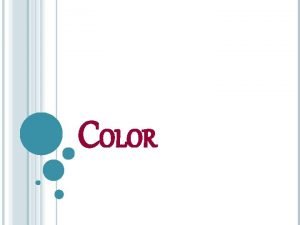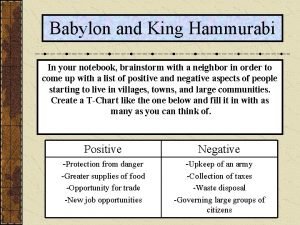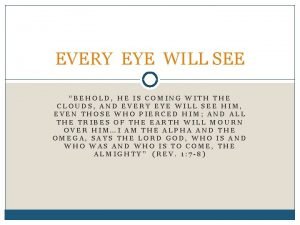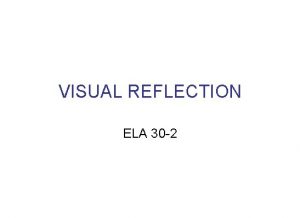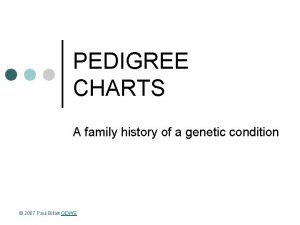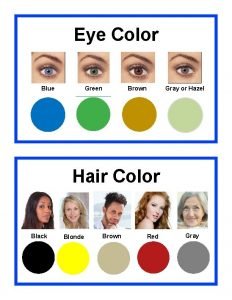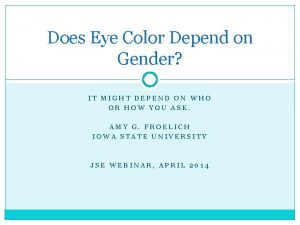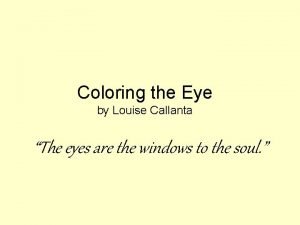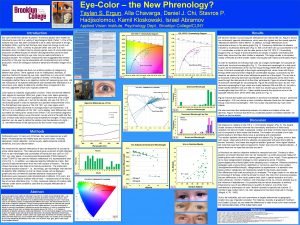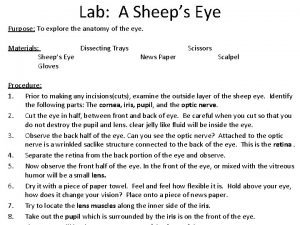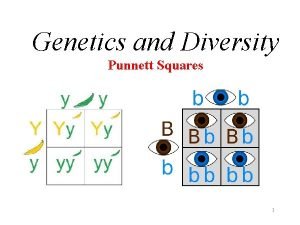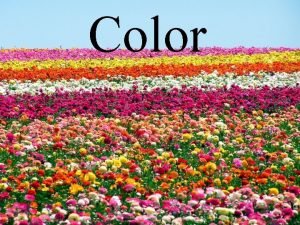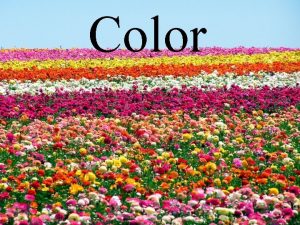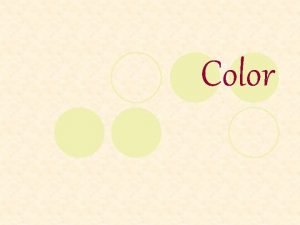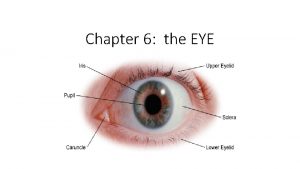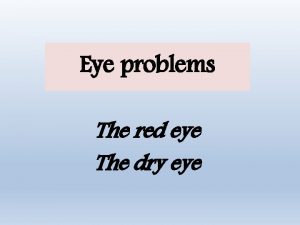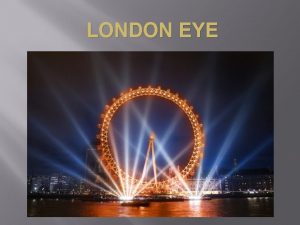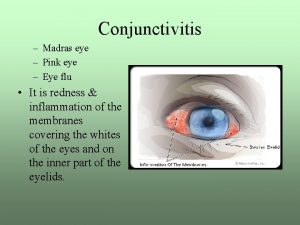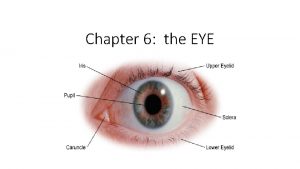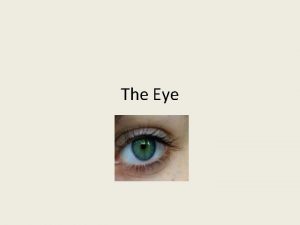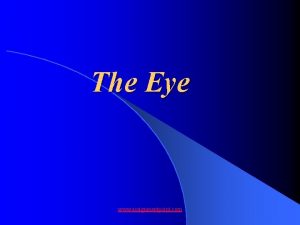Color Color The visual response of the eye















































- Slides: 47

Color


Color The visual response of the eye to reflected rays of light Element of floral design 3 dimensions of color � Hue � Value � Chroma

Hue The descriptive name of a color Pure color without black, white, or gray added Defines a specific spot on the color wheel � There are 12 hues on the color wheel

Value The lightness or darkness of a hue Relative to the gray scale Achieved by the addition of black, white, or gray � Shade � Tint � Tone

Gray Scale �A visual aid which represents the transitional graduations of value from white to black, encompassing all the varying degrees of gray

Shade A hue which has been darkened by the addition of black Deeper in appearance Examples- � navy is a shade of blue � burgundy is a shade of red

Tint A hue which has been lightened by the addition of white Pastel in appearance Examples- � Light blue is a tint of blue � Pink is a tint of red

Tone A hue which has been muted by the addition of gray Dusty in appearance Examples- � wedge wood blue is a tone of blue � mauve is a tone of red

Chroma The degree of strength, intensity, saturation, or purity of a color A fully saturated hue is a color of the highest chroma or intensity More pigment would make a color brighter; less would make the color more dull

Pigment substance used to provide color to paints, dyes, plastics, and other materials

Intensity reflects the maximum amount of light back to the viewer’s eye is not mixed with black, white, or gray

Saturation the measure of the intensity or brightness of a color, describing the amount of light reflecting from it The greater the saturation of color, the higher the chroma

Color wheel Diagrammatic representation of all the hues in a color system presented in their proper spectral order. Twelve hour color system which was developed by Louis Prang, an American Printer in 1876.

Color Wheel

Primary colors Red, yellow, & blue, forming the basis of the color wheel, from which all other colors are created Spaced equidistantly apart on the color wheel Cannot be created by mixing any other colors together

Primary Colors

Secondary colors Orange, green, & violet The three hues resulting from the blending of two primary colors Placed in between primary colors

Secondary Colors

Tertiary colors Six colors resulting from the blending of a primary color and an adjacent secondary color on the color wheel, mixing primary and secondary colors Red-orange, red-violet, blue-green, yellow-green, & yellow-orange Mixing primary & secondary colors Primary color is always listed first with a hyphen in the center of the word

Tertiary Colors

Chromatic colors Colors derived from the visible spectrum characterized by the presence of both hue and chroma all colors other than black, white or gray

Achromatic colors Neutral colors which lack hue, black, gray and white. Do not appear on the color wheel They occur when light is absorbed or reflected without displaying any spectral hue. Achromatic color harmony: a grouping of colors without hue; white, black, and any values of gray. Neutral colors: an achromatic color to which a small amount of hue has been added

Advancing (warm) colors Aggressive or warm Predominantly composed of red or yellow Visually move forward toward the viewer

Warm colors Advancing colors, such as red, orange, yellow Association with fire and sunshine Energizing or stimulating effect on the viewer Active, cheery, evoking warm and happy feelings Dominating colors, look larger and advance Irritating if too much

Receding (cool) colors Predominantly composed of blues or greens Visually pull back from the viewer Passive or cool

Cool Colors Receding colors Blues, green, and violets Generally associated with water or foliage, cool things Have a calming effect on the viewer

Color harmony Groupings of specific hues and/or different values of one hue Resulting in a pleasing or useful combination Color harmonies may display different values of the given hue and still be considered complementary color harmony. (example: peach and baby blue) Achromatic/neutral colors can be included in any color harmony

Achromatic color harmony A grouping of colors without hue; white, black, and any values of gray.

Monochromatic color harmony A grouping of different values of one hue May include achromatic colors An example would be blue and tints, tones, shades of blue. � Example: blue, navy, wedge wood blue, and light blue

Analogous color harmony A grouping of 3 adjacent hues on the color wheel No more than one primary color One color dominates Example – red-orange, with red dominating

Complementary color harmony A pair of hues directly opposite each other on the color wheel Examples: red & green, violet & yellow, or blue & orange

Split complementary color harmony A trio of hues, consisting of a hue and the two hues on either side of its direct complement Example - violet, yellow-orange, & yellow-green

Triadic color harmony A grouping of three hues which are equidistant on the color wheel Example - primary colors; red, blue & yellow � Tints of primaries-pink, baby blue, & soft yellow

Tetradic color harmony A grouping of four hues which are equidistant on the color wheel A double-complement

Color Psychology Colors are known evoke moods and feelings and appeal to our emotions

Colors can set the mood of an arrangement and create emotional impressions.

Identify color schemes in floral designs 1

Identify color schemes in floral designs 2

Identify color schemes in floral designs 3

Identify color schemes in floral designs 4

Identify color schemes in floral designs 5

Identify color schemes in floral designs 6

Identify color schemes in floral designs 7

Identify color schemes in floral designs 8

Identify color schemes in floral designs 9

Identify color schemes in floral designs 10
 What is split complementary color scheme
What is split complementary color scheme An eye for an eye hammurabi
An eye for an eye hammurabi Worm's eye angle shot
Worm's eye angle shot An eye for an eye hammurabi
An eye for an eye hammurabi Normal eye vs anemic eye
Normal eye vs anemic eye Code of hammurabi activity
Code of hammurabi activity An eye for an eye a tooth for a tooth sister act
An eye for an eye a tooth for a tooth sister act Explain
Explain An eye for an eye meaning
An eye for an eye meaning Every eye is an eye
Every eye is an eye Natural response and forced response
Natural response and forced response First order system transfer function
First order system transfer function Primary immune response and secondary immune response
Primary immune response and secondary immune response Visual assignment
Visual assignment Yang termasuk bahasa pemrograman konvensional adalah
Yang termasuk bahasa pemrograman konvensional adalah Hair color punnett square
Hair color punnett square Pedigree chart symbols
Pedigree chart symbols Green eye vs hazel
Green eye vs hazel Eye color percentages
Eye color percentages Two blue eyed parents brown eyed child
Two blue eyed parents brown eyed child Dominant allele definition
Dominant allele definition Albedo eye color
Albedo eye color Marek's disease eye color
Marek's disease eye color Sheep eye retina
Sheep eye retina Blue eye phenotype
Blue eye phenotype By communicating the outside world
By communicating the outside world Stanford eye color calculator
Stanford eye color calculator Hình ảnh bộ gõ cơ thể búng tay
Hình ảnh bộ gõ cơ thể búng tay Lp html
Lp html Bổ thể
Bổ thể Tỉ lệ cơ thể trẻ em
Tỉ lệ cơ thể trẻ em Gấu đi như thế nào
Gấu đi như thế nào Tư thế worm breton là gì
Tư thế worm breton là gì Bài hát chúa yêu trần thế alleluia
Bài hát chúa yêu trần thế alleluia Các môn thể thao bắt đầu bằng từ đua
Các môn thể thao bắt đầu bằng từ đua Thế nào là hệ số cao nhất
Thế nào là hệ số cao nhất Các châu lục và đại dương trên thế giới
Các châu lục và đại dương trên thế giới Công thức tính thế năng
Công thức tính thế năng Trời xanh đây là của chúng ta thể thơ
Trời xanh đây là của chúng ta thể thơ Mật thư tọa độ 5x5
Mật thư tọa độ 5x5 Phép trừ bù
Phép trừ bù Phản ứng thế ankan
Phản ứng thế ankan Các châu lục và đại dương trên thế giới
Các châu lục và đại dương trên thế giới Thể thơ truyền thống
Thể thơ truyền thống Quá trình desamine hóa có thể tạo ra
Quá trình desamine hóa có thể tạo ra Một số thể thơ truyền thống
Một số thể thơ truyền thống Bàn tay mà dây bẩn
Bàn tay mà dây bẩn Vẽ hình chiếu vuông góc của vật thể sau
Vẽ hình chiếu vuông góc của vật thể sau
